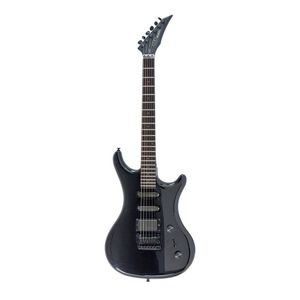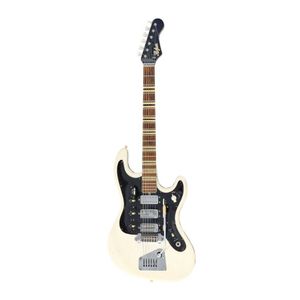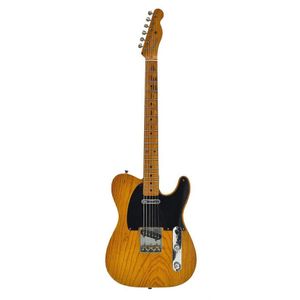Bill Ward's FOMI Katipo 6-String Electric Guitar with Coffin Case
You must be a subscriber, and be logged in to view price and dealer details.
Subscribe Now to view actual auction price for this item
When you subscribe, you have the option of setting the currency in which to display prices to $Au, $US, $NZ or Stg.
- Maple - Maple, native to North America, is a dense heavy timber from light to yellow-brown in colour. It has very little distincive graining unless it is one of the variants such as birds-eye maple or burr maple, so was not used extensively for furniture in 18th and 19th century, where cabinetmakers and designers preferred timbers with more distinctive features such as mahogany, walnut, rosewood and oak.
Birds-eye maple has a seres of small spots linked by undulating lines in the grain, is highly sough and is used as a decorative veneer. Burr maple has larger and irregular grain swirls than birds-eye maple. - Rosewood - A dense timber that varies in shade to very light brown to almost black. When rosewood is cut and sanded the colour of the timber will turn black, and after polishing and exposure to daylight, the surface will gradually lighten over time to light brown with black streaks.
The name comes from the odour emanating from the timber when it is planed, sanded or cut.
Rosewood was very popular for use in Victorian furniture in the second half of the 19th century, and at that time most of the rosewood was imported from Brazil. However it also grows in India and Indonesia.
It is used in the sold for chairs and table legs, but for carcase furniture such as side cabinets and bookcases, and for table tops it is always used as a veneer.
This item has been included into following indexes:
Visually similar items

Burns Bison: Vintage electric bass guitar, made in London c1964. In home-made wooden case.

A Westone Pantera X300 electric guitar, 1986, Japanese made in the Matsumoku factory, serial number 6050059 stamped to back plate, six black machine heads, gloss black body and neck, East Indian fretboard with pearloid block inlays, two single coil pickups

A Hofner Naugahyde 176 White Vinyl electric guitar, 1965, German made, white faux reptile skin vinyl front, black faux reptile skin back, gloss black mahogany neck, bound Indian rosewood fingerboard, rectangular mother-of-pearl inlays, plastic 'Hofner' mot

A Fender Telecaster 1953, Serial no. 2454, blonde - very early Telecaster in otherwise original condition. Body stripped during the 60's, some decal wear, period-correct replica case. Comes with limited edition book the Blackguard - a detailed history of t
